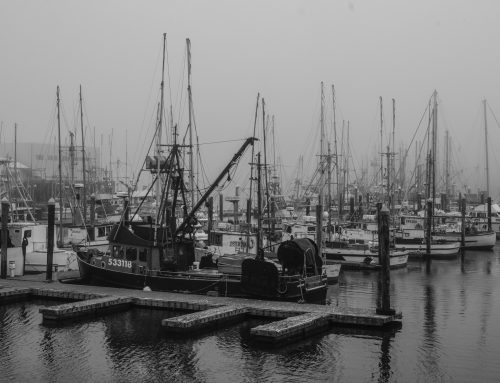Previsualize the Potential
Ansel Adams introduced the method of pre visualization into the photographer’s dictionary. This was a term he used to stress the importance of seeing in the photographer’s mind, exactly what the final print would be, prior to attempting to make the photograph. Remember that word “make”.
There are three times we as photographers must go through this pre visualization process.
I) —Prior to reaching a potential location:
I can not remember ever being successful the 1st time I visited a location and tried and make quality images. It always amazes me to see other photographers, and also photography workshop leaders take their students to a location like Mono Lake, California for instance, walk them down to a shooting spot, many times in the dark and ask them to try and make a quality photograph of the sunrise over the tufa. This is almost an impossible task even at ones 2nd or 3rd visits to this area. It’s important to study the area, weather etc and be prepared to make your attempt at a decent image.
 However, once you’ve been to a location a few times, it becomes easier to predict what the weather, seasonal environment etc can be. Understanding these criteria, you can now set in your mine where you may locate yourself, and what the best potential for a quality image might be. I do this sometimes even before going to bed, prior to a sunrise shoot. (I always hope for the best but often am often disappointed). Try previsualizing while driving to your location. Instead of blasting music or God forbid the news on the way to a location, try some music to set the mood or maybe no music at all, and think about what the potential of the day could be. Is the image your out to attempt better vertically or horizontally? (I always start with composition). If the light is good, and the subject is what you feel is strong, then think about what lens you may need. Might you need a graduated filter? Without this preconceived image, more often than not, the final image will fail due to lack of technique, however creativity, or the ability to see an image is always primary.
However, once you’ve been to a location a few times, it becomes easier to predict what the weather, seasonal environment etc can be. Understanding these criteria, you can now set in your mine where you may locate yourself, and what the best potential for a quality image might be. I do this sometimes even before going to bed, prior to a sunrise shoot. (I always hope for the best but often am often disappointed). Try previsualizing while driving to your location. Instead of blasting music or God forbid the news on the way to a location, try some music to set the mood or maybe no music at all, and think about what the potential of the day could be. Is the image your out to attempt better vertically or horizontally? (I always start with composition). If the light is good, and the subject is what you feel is strong, then think about what lens you may need. Might you need a graduated filter? Without this preconceived image, more often than not, the final image will fail due to lack of technique, however creativity, or the ability to see an image is always primary.
Previsualize the potential
II) Now that you are at the location, previsualize even more.
Upon arrival at your location you’ll find the conditions are either what you though they were, no where near what they could have been, or more often somewhere in the middle. It’s time to previsualize again.
While looking at the scene, think of your final print. There are no cameras, at any level of sophistication can imagine what is in our mind and how we see an image. You now need to think if you must frame the scene differently, and technically make necessary changes as best you can to make the image (and thus the print) look the way you want.
 I often hear many of today’s amateur photographers say that their cameras (no matter how sophist aced they may be, just do not produce the images they expect. What they are saying is that they are not getting results the way they see them in real life, or through the viewfinder. Inevitably, many of these photographers blame the camera for failing to deliver the desired results. By previsualing we are far more likely to capture the desired image rather than be disappointed because of not preparing, and trying to photograph a subject without previsualizing.
I often hear many of today’s amateur photographers say that their cameras (no matter how sophist aced they may be, just do not produce the images they expect. What they are saying is that they are not getting results the way they see them in real life, or through the viewfinder. Inevitably, many of these photographers blame the camera for failing to deliver the desired results. By previsualing we are far more likely to capture the desired image rather than be disappointed because of not preparing, and trying to photograph a subject without previsualizing.
Making fine art images is not luck. Sure, rarely may you just hit it right. I tell folks to think about their top 10 images they have photographed. I bet none of them were due to luck. You were either prepared beforehand and knew technically what you were doing. The photographer must be part of the creative process from beginning to end
Previsualize the potential
III- The Print……. Think about the print, while in the field!
The final print is where we determine the success or failure of an image (not what we see on a monitor, viewing high compression jpegs.). Believe me; Ansel Adams previsualized exactly what he was going to do in the darkroom, at the time he was making the image in the field. You must do the same. After the image is made in the field, your aesthetic tastes are now the method of pre visualization.
Before making the image in the fields think about the final print. Should it be black & white? What kind of paper should we use? Will I be using any creative software… and on and on.
The photographer is an artist and as such must be a willing to be an active participant in every step leading up to the image’s final result, which is the print. This theory is explained in depth in Galen Rowell’s book, The Inner Game of Outdoor Photography. However without previsualizing the entire process more often than not, your images will be less than desired.
Previsualize the potential.
You don’t take a photograph, you make it.” – Ansel Adams



